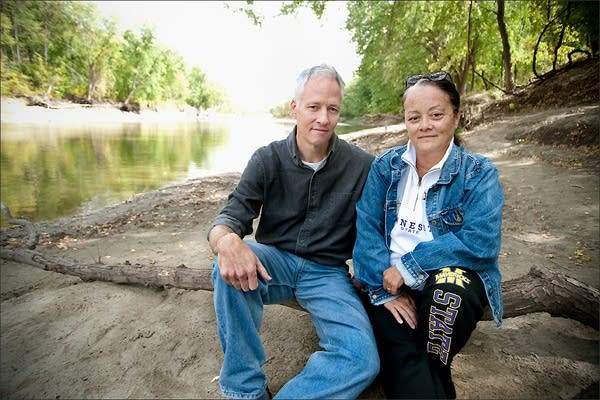Part 2: Mankato's history largely hidden
Go Deeper.
Create an account or log in to save stories.
Like this?
Thanks for liking this story! We have added it to a list of your favorite stories.

By John Biewen
In setting out to understand what happened in southern Minnesota in 1862, I asked Gwen Westerman to be my guide. She agreed to spend a few days with me, driving around the state to the spots where it all occurred so I could tell the story. We met up in Mankato. I grew up there but haven't lived there for 30 years. She's lived and taught there for the last 20 years.
"More people probably know about the town of Mankato than realize it," said Gwen. "In the television series 'Little House on the Prairie,' the Ingalls family lived in Walnut Grove, and whenever Ma and Pa wanted to get away from the kids, they came to Mankato."
Gwen is an English professor at Minnesota State University in Mankato, and a member of the Dakota tribe. She's in her 50s, like me. She grew up in Kansas, as part of the Dakota diaspora. A lot of her family was banished from Minnesota after the 1862 war. Not that she's always known that herself.
Turn Up Your Support
MPR News helps you turn down the noise and build shared understanding. Turn up your support for this public resource and keep trusted journalism accessible to all.
See, I grew up in Mankato, a white kid, knowing next to nothing about the bloody history that happened beneath my feet. Gwen got a teaching job and moved to Mankato, also knowing nothing about that history. She found out later that some older people in her family did know.
"When I took the job here at MSU, my father and my uncle would say, 'Well, we'll see how long you last there.' But they never did explain why they had questions about whether I would stay here or not," she said.
She began learning of that history, and her connection to it, on Dec. 26, 1993.
"I had a friend who worked at the university. She was also Indian," Gwen recalled. "She said, 'There are Indians coming. Let's go see what they're doing.'"
Gwen didn't know it, but she and her friend Kimberly were going to see the annual ceremony for the Dakota men who were hanged in Mankato's town square in 1862. They arrived late for the ceremony and stood in the back for the prayers and songs. They still didn't know what the event was about -- and then it was over.
"Kimberly and I got back in the car, and she was driving. ... I don't know if your parents drove fast on back-country roads when you were small, up and down the hills. We used to love it when my parents would do that, because you'd go over the top of the hill and then your stomach would kind of come up," she said. "As we rounded the corner of a building, my stomach came up. Just like that. And I started to sob. Kimberly stopped the car and said, 'What's wrong? What's wrong?' And I told her that I had no idea what was wrong. It was incredible sadness."
"I didn't really say anything to anybody about that until a few days later, when I called my uncle and explained to him what had happened. After I finished my story, he was quiet for a long time. Then he finally said, 'Well, my girl. You're connected to that place in a way that you'll understand someday.' How do you explain it? I didn't know what had happened here."
After that, she learned all about it. How Little Crow, the Dakota chief who led the uprising in 1862, was the brother of her great-great-great-great grandmother. Another relative, Mazamani, was killed in the last battle of the war.
Now she's so steeped in it she co-wrote a book about the history of the Dakota people in Minnesota. ("Mni Sota Makoce: The Land of the Dakota.")
Part 3: The incident at Acton >>>
<<< Return to part 1 of Little War on the Prairie




